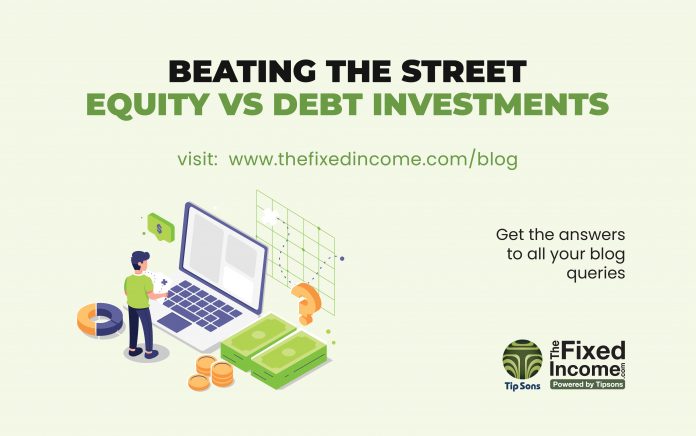Mr. Peter Lynch being perfectly right in considering equity as a superior investment to fixed-income in the USA when parameters like PEG and a fair PE Ratio are considered, would have been way off mark for India.
Not willing to sin against the Guru, let me present the differences.
India is, and has been a relatively high inflation economy compared to the USA or Europe. The direct impact of inflation is reflected in interest rates in the economy. Barring during a few recent years the world’s central banks have encouraged savers by ensuring that they get a real rate of return. The economic agenda behind the central bank fixing interest rates are several in addition – controlling inflation, providing a reasonable price to the currency, balancing it with an ability to borrow at a reasonable rate for the government and providing liquidity for business.
Investing in India, as in the USA have showed equity to be a superior asset class, if the entry levels are times. Even the best analysts may be able to time entry at the market bottom a couple of times in their career, but it is not complex to work out a range near the bottom 20% or so (the psychological play in Peter Lynch’s cocktail party theory illustrates this beautifully*). Valuations, and more importantly, relative valuations of asset classes are reliable guides for this. Exceptions for this would be mostly at the tops, as bubbles can grow big and last long.
Equity performs in spurts. The extremely granular returns even out over time but can provide ulcers to the fidgety. There are mostly short spurts of a big bull run for a year or two, followed by a sedate market for some years. The Indian markets enjoyed its longest bull run in sensex history, producing returns of 700% in 5 years from 2002-03 to 2007-08. The bond markets are not likely to match these. But the investment in bonds will provide regular interest and some capital appreciation.
Lynch names four stages in stock markets.
1: The market is down and no one talks about stocks. At a cocktail party, people ignore Lynch, the acknowledge fund manager and prefer talking to a dentist about plaque. This is the best time to buy stocks. This is the bottom.
2: People acknowledge Lynch, but still prefer discussing plaque with the dentist. They consider equities very risky. The market is up, but still very attractive.
3: Everyone in the party, including the dentist, are talking about stocks and asking Lynch for tips. Everyone talks about their own investments. Market is up substantially. This is the time Lynch prepares a selling list from his portfolio. The time to buy is past.
4: Everyone including the dentist crowds around Lynch, but are telling him what to buy! This is a sign that market will fall soon and for the smart investor to sell his portfolio, generate cash, pack his bags and take a break.



















